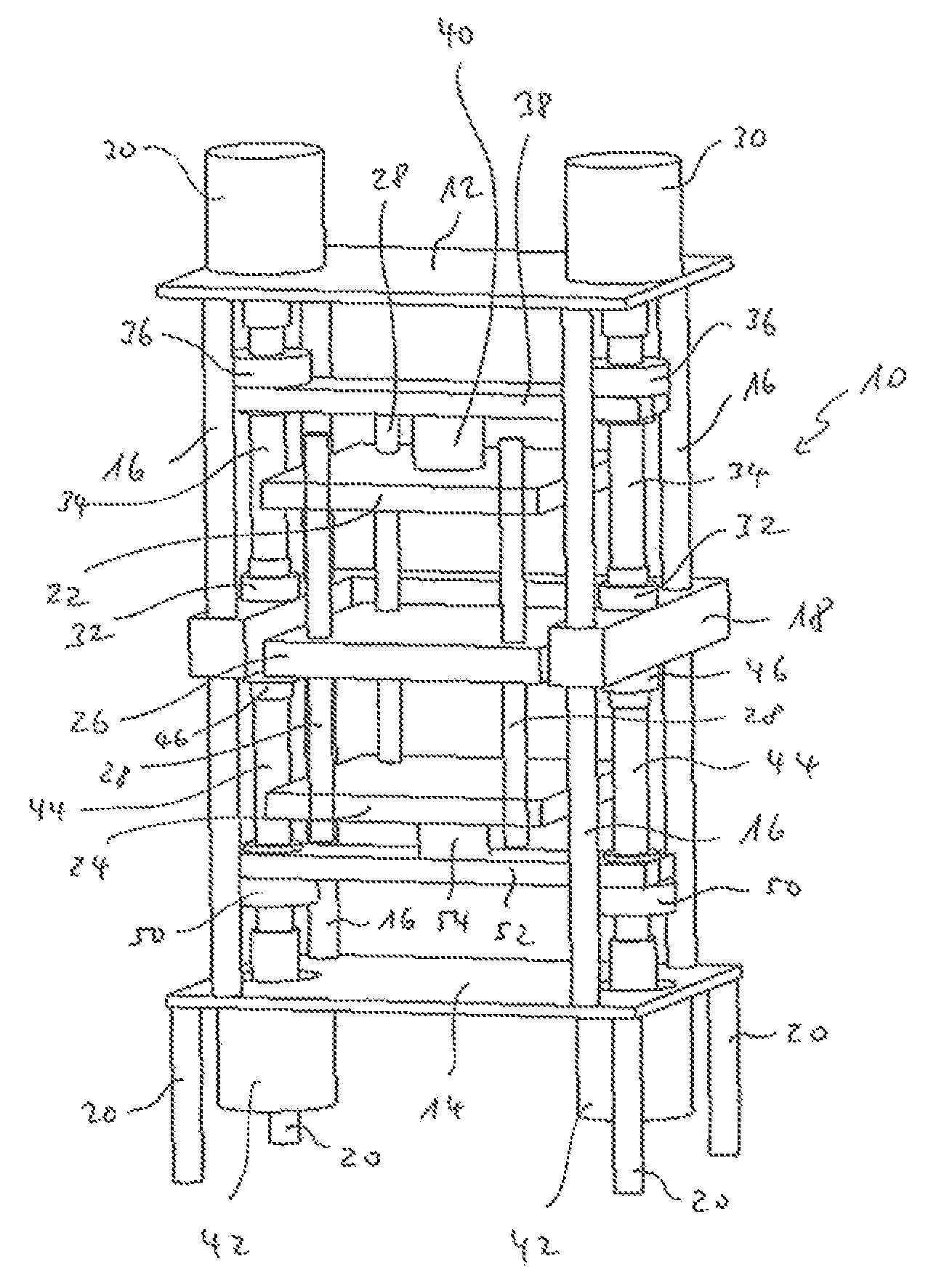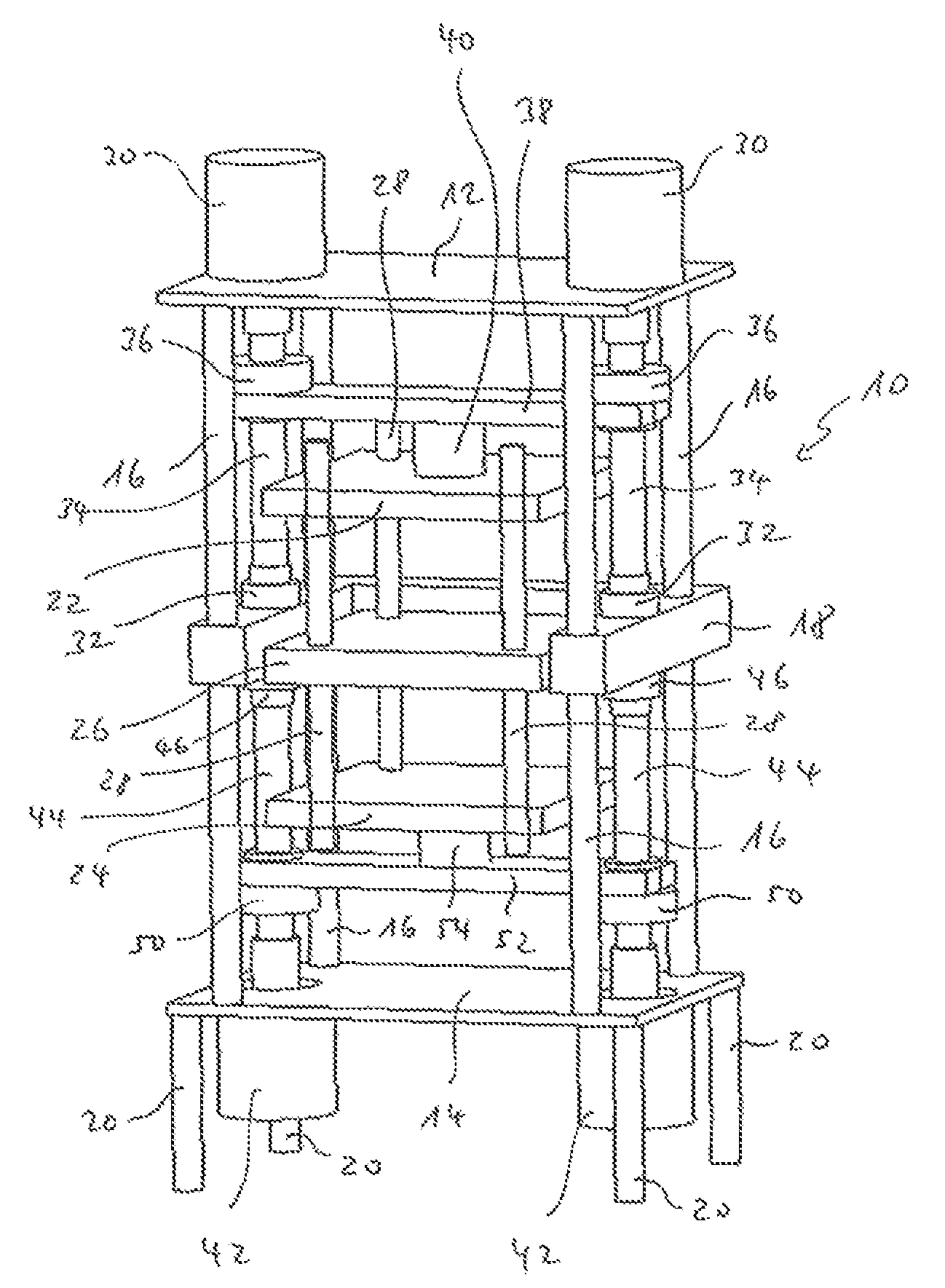Press
a press and guiding unit technology, applied in the field of presses, can solve the problems of defective pressing results, deformation of press components, and considerable additional expense of tool guiding units, and achieve the effect of high motor weigh
- Summary
- Abstract
- Description
- Claims
- Application Information
AI Technical Summary
Benefits of technology
Problems solved by technology
Method used
Image
Examples
Embodiment Construction
[0020]While this invention may be embodied in many different forms, there are described in detail herein a specific preferred embodiment of the invention. This description is an exemplification of the principles of the invention and is not intended to limit the invention to the particular embodiment illustrated.
[0021]An example of the invention is explained in greater detail in the following by means of a drawing. The single FIGURE diagrammatically shows an inventive press in a perspective view. The inventive press has a press frame 10 with an upper retaining plate 12 and a lower retaining plate 14. In the example shown, the upper and the lower retaining plates 12, 14 are connected with one another over four spacers 16, which extend in the vertical direction and with a supporting element 18, which is disposed approximately centrally between the upper and lower retaining plates 12, 14. In the example shown, the supporting element 18 is constructed in one piece and has a U-shaped prof...
PUM
| Property | Measurement | Unit |
|---|---|---|
| reaction forces | aaaaa | aaaaa |
| distance | aaaaa | aaaaa |
| force flux | aaaaa | aaaaa |
Abstract
Description
Claims
Application Information
 Login to View More
Login to View More - R&D
- Intellectual Property
- Life Sciences
- Materials
- Tech Scout
- Unparalleled Data Quality
- Higher Quality Content
- 60% Fewer Hallucinations
Browse by: Latest US Patents, China's latest patents, Technical Efficacy Thesaurus, Application Domain, Technology Topic, Popular Technical Reports.
© 2025 PatSnap. All rights reserved.Legal|Privacy policy|Modern Slavery Act Transparency Statement|Sitemap|About US| Contact US: help@patsnap.com


